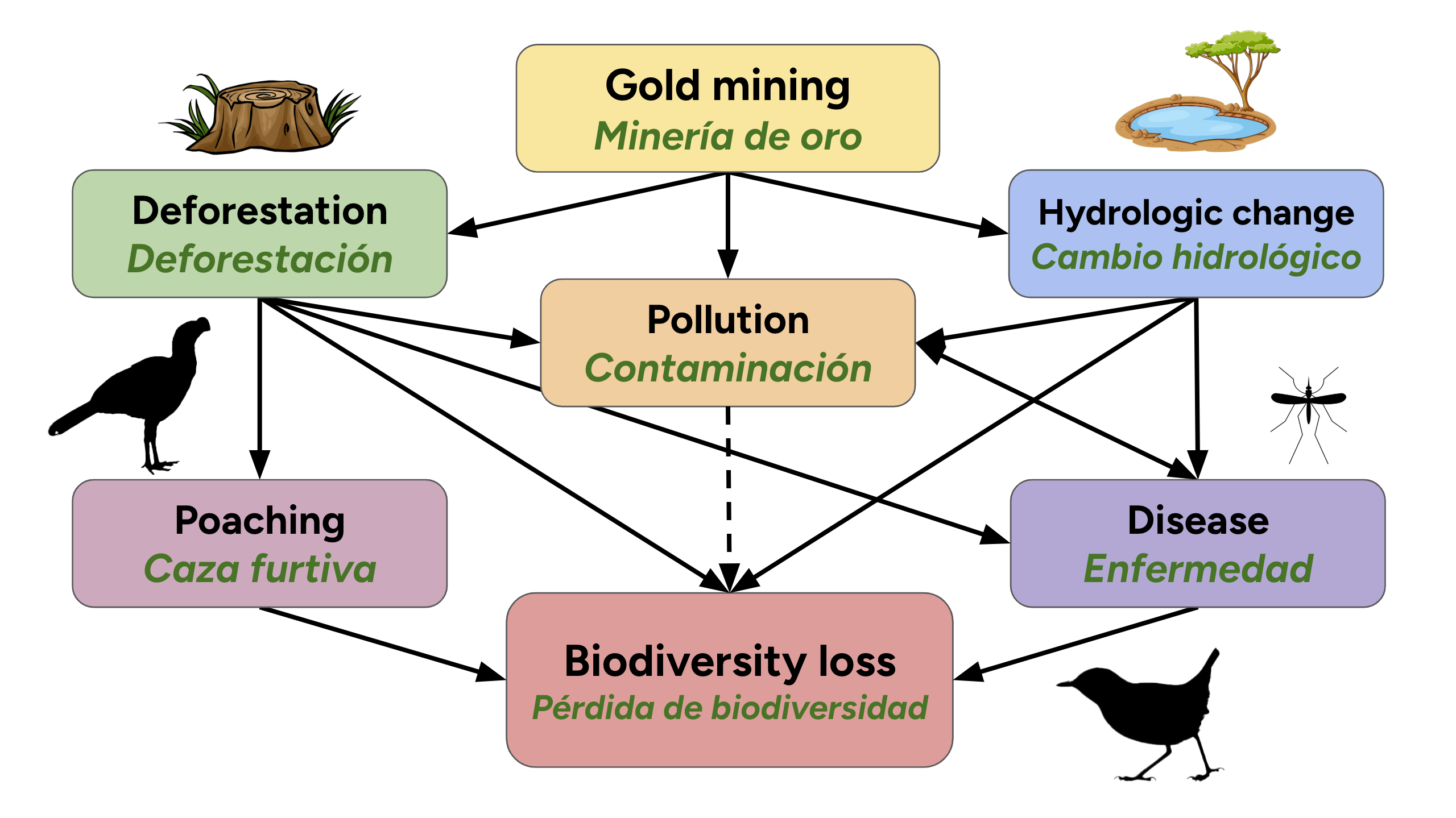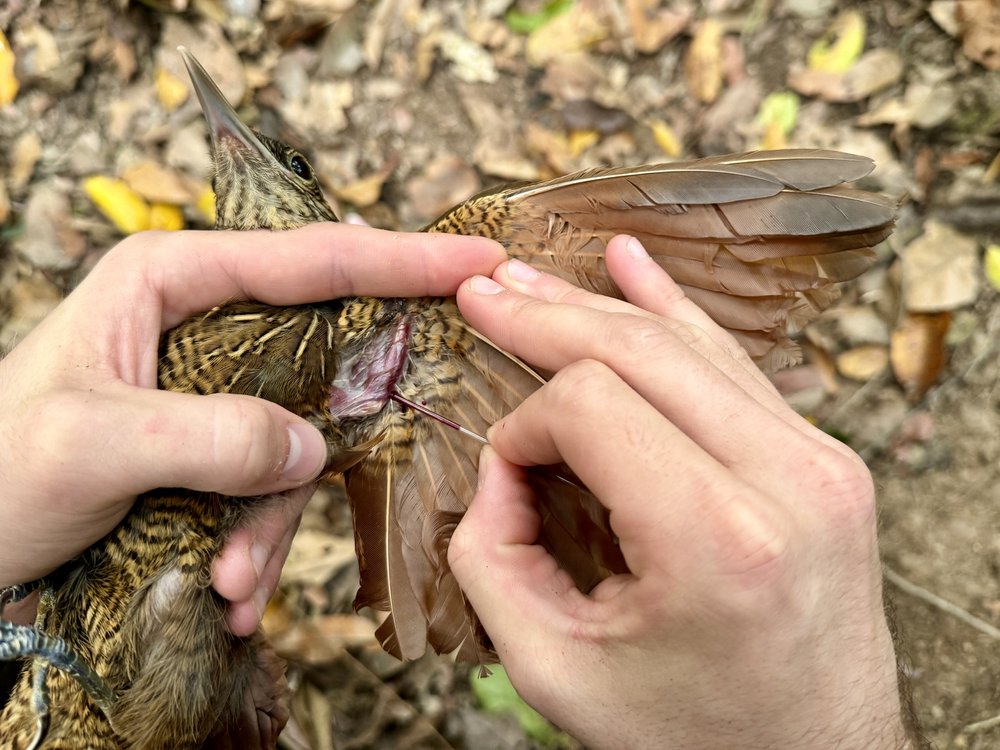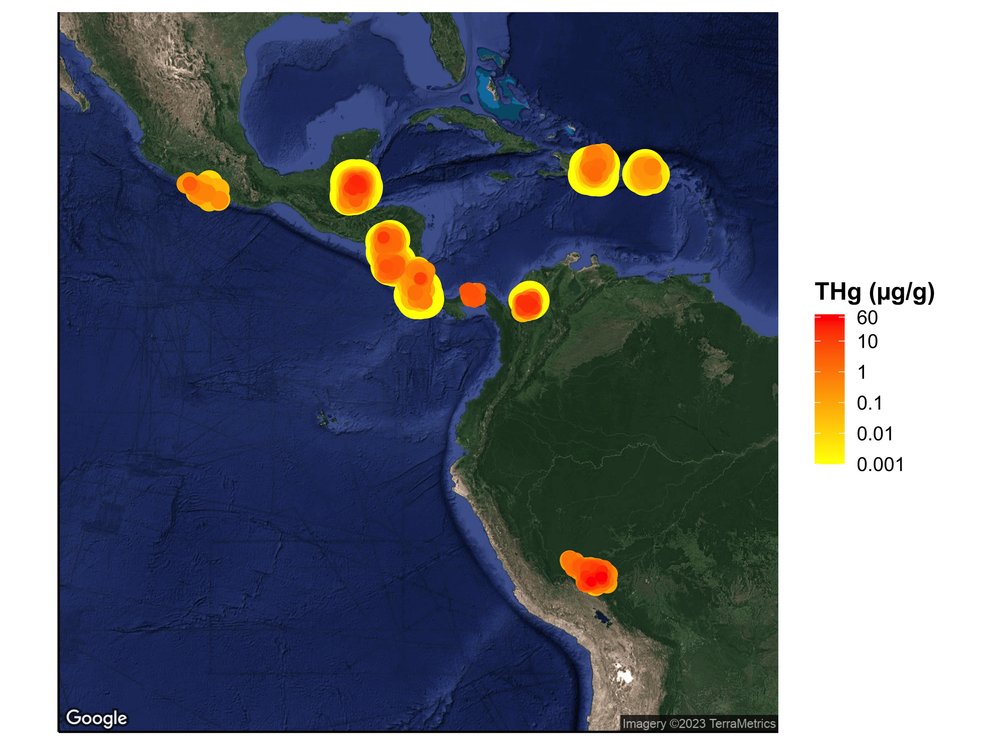Research
Disentangling the impacts of gold mining to biodiversity in the AmazonA global surge in gold price is causing an ongoing gold rush in the most biodiverse place on Earth: the Amazon. Yet, we do not understand how the environmental disturbances from this industry may contribute to biodiversity loss. With the support of local collaborators, we are monitoring how bird communities respond to habitat degradation, pollution, hunting, and disease while surveying gold mines and conservation reserves in Peru. Watch the presentation. Funded by the National Science Foundation, National Aeronautics and Space Administration, Biodiversity Research Institute, UCLA Department of Ecology & Evolutionary Biology, American Ornithological Society, SoCal SETAC, UCLA Latin American Institute, and Sigma Xi Research Honor Society. |
 |
 |
Optimizing heavy metal biomonitoring in the tropicsAs mining industries expand to meet the global demand for precious minerals, heavy metal pollution is becoming commonplace throughout the tropics. Blood sampling provides a reliable, nonlethal measurement to track contamination in organisms, but storing samples can be impractical in remote field conditions. I am developing a simple, inexpensive method to assess heavy metal exposure in birds without needing refrigeration – thereby removing logistical barriers for scientists based in the tropics. Funded by the National Science Foundation, National Aeronautics and Space Administration, Biodiversity Research Institute, UCLA Department of Ecology & Evolutionary Biology, American Ornithological Society, SoCal SETAC, UCLA Latin American Institute, and Sigma Xi Research Honor Society. |
Summarizing over a decade of Neotropical bird mercury dataEnvironmental mercury contamination has been severely neglected in the Neotropics, despite rapidly growing emissions from gold mining. To improve our understanding of mercury exposure to terrestrial biodiversity, we established exposure baselines for over 300 bird species across Central America, South America, and the West Indies, and quantified Hg prevalence and variation across taxonomic groups and functional traits. Read the article. |
 |
 |
A collaborative network for monitoring pollution in the tropicsEnvironmental pollution of the global tropics outpaces our understanding of its consequences for biodiversity, and may contribute to regional bird declines. The TRACE Network is an international collaboration that produces, and provides open access to, emerging data on biotic contamination to better inform tropical bird conservation. To contribute to TRACE, visit our website. Funded by the Biodiversity Research Institute. |
Assessing mercury risk in a group of declining marsh birdsTidal marsh sparrows are species of conservation concern primarily due to global sea-level rise and habitat loss, but mercury pollution may present additional threats to their reproductive success and survival. We identified clear bioaccumulation differences between species of similar niches, as well as pollution hotspots in previously unsampled areas of their breeding ranges. Read the article. |
 |